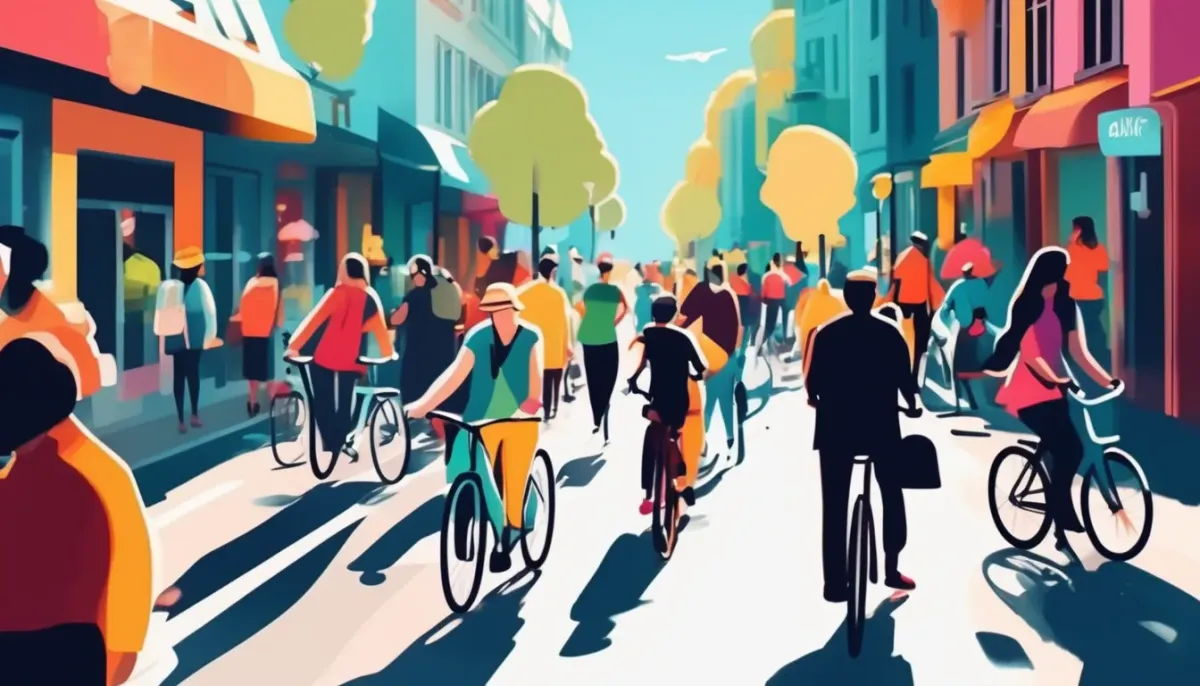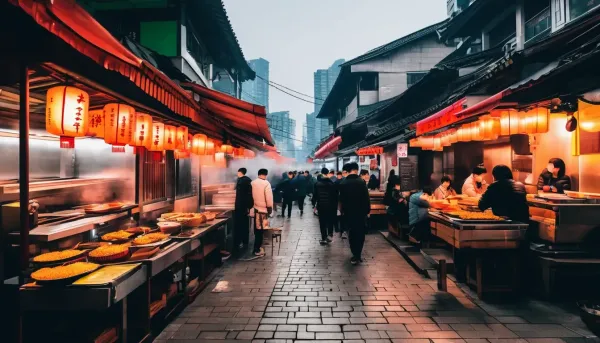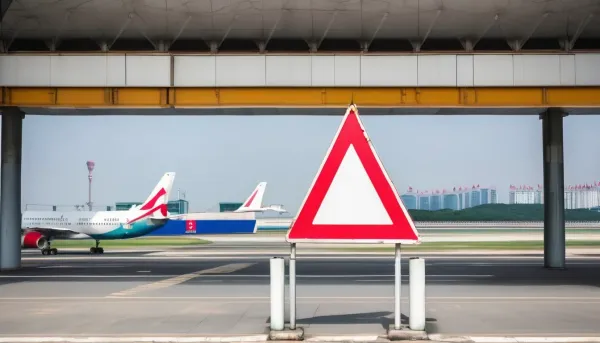A Land of Fascinating Contrasts Between Order and Disorder
Mainland China is a land of contrasts, where apparent chaos, like bicycles riding against traffic and line-cutting, hides an underlying order. This blend of flexibility, social norms, and implicit rules reveals a society that balances disorder with harmony and adaptability.

Mainland China: A Land of Fascinating Contrasts Between Order and Disorder
Mainland China is a land of contrasts, where ancient traditions blend with modern innovation, and a sense of order exists within apparent disorder. To an outsider, the streets and public spaces may seem chaotic, with bicycles often riding against traffic and occasional line-cutting in queues. However, beneath this surface of apparent chaos lies an implicit order, a set of unspoken rules that everyone seems to recognize and abide by. This unique blend of order and disorder is a fascinating aspect of Chinese society, reflecting the complexity and adaptability of its people.
The Surface of Disorder
One of the most striking examples of this apparent disorder is the sight of bicycles going against traffic on busy streets. In many countries, such behavior would be seen as reckless and dangerous, strictly prohibited by traffic laws. Yet in China, it is surprisingly common. Cyclists weave through oncoming traffic, skillfully avoiding collisions with both pedestrians and vehicles. To the untrained eye, this might seem like pure chaos, a blatant disregard for traffic rules.
However, a closer look reveals that there is a method to this madness. Cyclists who ride against traffic often choose less crowded lanes, keeping to the edges of the road to minimize disruption. They seem to have an intuitive understanding of the flow of traffic, knowing when to speed up or slow down to avoid accidents. It is as if they are following an unwritten code, a set of informal guidelines that allow them to navigate the streets safely despite the apparent disorder.
This phenomenon is not limited to cyclists. Pedestrians, too, display a remarkable ability to navigate through crowded streets and busy intersections with minimal fuss. In places where traffic lights and pedestrian crossings are often ignored, people have developed a keen sense of timing and spatial awareness. They know when to cross the road, even in the absence of a green light, and are adept at avoiding collisions with other pedestrians and vehicles. This seemingly chaotic behavior is, in fact, governed by a subtle and unspoken understanding of the dynamics of the street.
The Subtle Order Beneath
While the surface may seem chaotic, there is an underlying order that governs these behaviors. This order is not imposed by strict rules or regulations but is instead a product of social norms and shared experiences. It is a form of collective wisdom that has evolved over time, allowing people to navigate complex social situations with minimal conflict.
In the case of cyclists riding against traffic, this behavior can be seen as an adaptation to the realities of urban life in China. The streets are often crowded, and designated bike lanes may be obstructed by parked cars or street vendors. Faced with these challenges, cyclists have developed a pragmatic approach that allows them to reach their destinations quickly and safely. This adaptability is a key feature of Chinese society, where people often find creative solutions to everyday problems.
A similar dynamic can be observed in the practice of line-cutting. While this might be seen as rude or inconsiderate in many cultures, in China, it is often tolerated or even expected in certain situations. For example, in a crowded train station during rush hour, someone might cut in line to catch an earlier train. While this may seem unfair, it is often done with a sense of discretion, avoiding direct confrontation. Those who are cut in front of may grumble, but they generally accept it as part of the hustle and bustle of daily life. This tolerance for minor transgressions reflects a broader cultural understanding that life in a densely populated society requires a certain degree of flexibility.
The Implicit Social Contract
The underlying order in Chinese society is maintained by a complex web of social expectations and mutual understandings. This implicit social contract is not codified in law but is instead upheld by the collective behavior of individuals. People know what is expected of them in various situations and adjust their actions accordingly. This creates a sense of order that is not immediately apparent to outsiders but is deeply ingrained in the fabric of Chinese society.
For example, in a crowded subway car, there is an unspoken agreement that passengers will make room for each other, even if it means standing uncomfortably close. People understand that personal space is a luxury in such situations, and they are willing to compromise for the sake of the collective good. This willingness to accommodate others, even in the face of discomfort, is a reflection of the deep-seated value of harmony in Chinese culture.
Similarly, in restaurants and other public spaces, there is a tacit understanding that people will adjust their behavior to suit the circumstances. If a group is occupying a large table in a crowded restaurant, they may be asked to share it with strangers. This practice, known as "da zhuo," is widely accepted and even appreciated as a way to ensure that everyone gets a seat. Again, this reflects the flexible nature of social interactions in China, where the emphasis is on finding practical solutions rather than strictly adhering to rules.
The Harmony of Contrasts
The coexistence of order and disorder in China is a testament to the resilience and adaptability of its people. It demonstrates a unique approach to social organization, one that prioritizes flexibility and pragmatism over rigid adherence to rules. This approach is rooted in the cultural values of collectivism and harmony, which emphasize the importance of maintaining social cohesion even in the face of challenges.
In this context, what may appear as disorder is actually a form of social negotiation, a way for individuals to navigate the complexities of urban life without causing undue friction. The implicit rules that govern behavior in these situations are not always obvious, but they are deeply understood by those who live within the system. This understanding allows for a remarkable degree of cooperation and coordination, even in the most crowded and chaotic environments.
Mainland China is indeed a fascinating place, where the lines between order and disorder are often blurred. The apparent chaos of bicycles riding against traffic or people cutting in line is, in reality, a reflection of a deeper, more nuanced form of social order. This order is not enforced by strict rules but is instead maintained through a combination of cultural norms, social expectations, and collective wisdom.
For those who take the time to observe and understand, this blend of order and disorder reveals a society that is both dynamic and harmonious. It is a society that values flexibility and adaptability, where people are willing to bend the rules when necessary to achieve a greater sense of balance. This unique approach to social organization is one of the many aspects that make China a truly remarkable and intriguing country.



